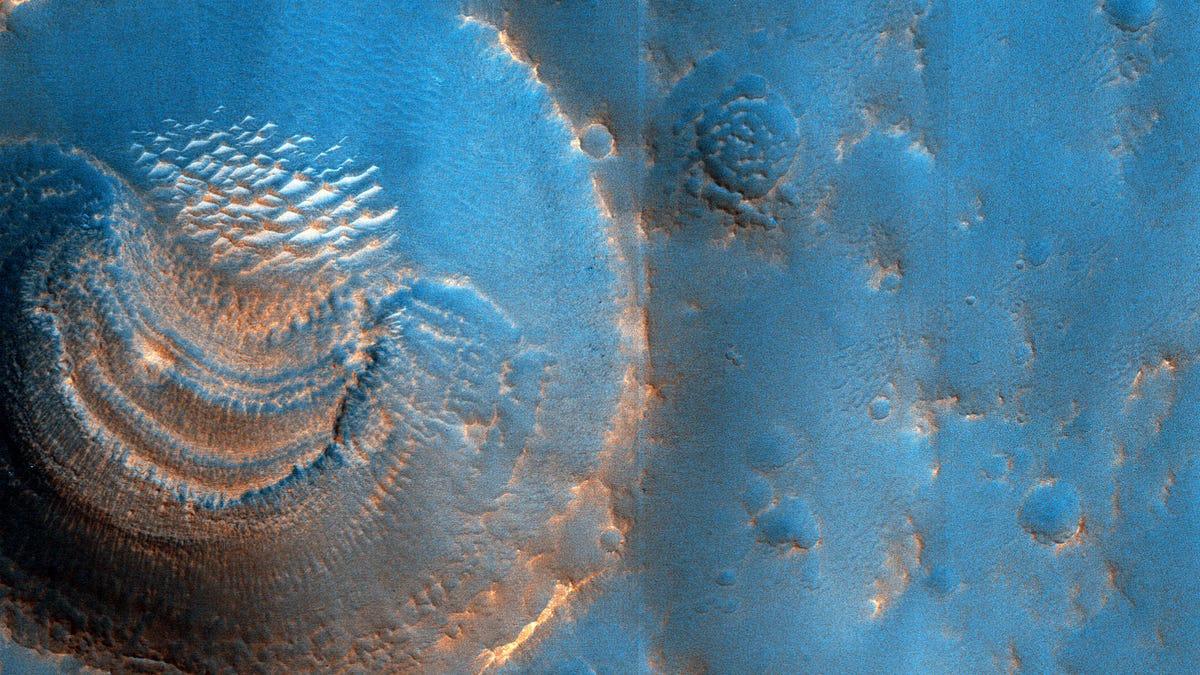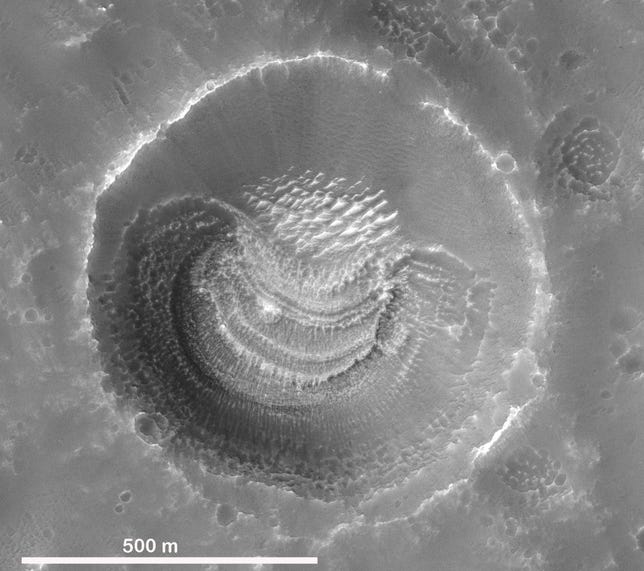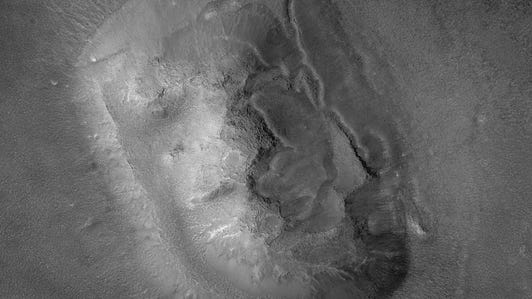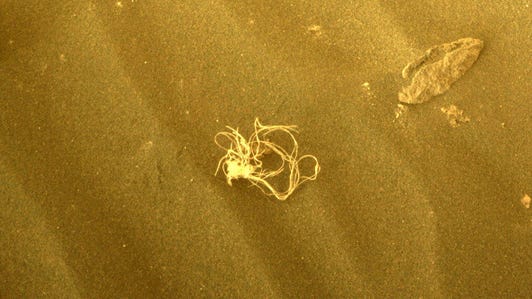But there’s a possible explanation for the weirdness spotted in NASA images.

This processed image from the MRO HiRise camera uses distinctive colors to highlight formations and features of a crater with unusual deposits inside it.NASA, JPL-Caltech, UArizona
This story is part of Welcome to Mars, our series exploring the red planet.
Mars offers lots of grand mysteries. Did it ever host microbial life? Are there hidden “lakes” under the polar cap? But the red planet also has intriguing smaller mysteries, like what’s going on inside a series of craters in the northern part of Mars.
NASA’s Mars Reconnaissance Orbiter captured some views of craters in the Arabia Terra region from up above using its HiRise camera. The craters in question “contain curious deposits with mysterious shapes and distribution,” HiRise team member Paul Geissler wrote last week. HiRise is run by researchers at the University of Arizona.

Enlarge Image
Here’s a fuller look at one of the representative craters with odd deposits seen by MRO’s HiRise camera in Arabia Terra.
NASA, JPL-Caltech, UArizona
There are a lot components to the crater mystery. “The deposits have horizontal laminations that could be layers or terraces,” wrote Geissler. They also have bright ridges radiating out. The oddball deposits appear only on the south sides of craters that are more than 1,970 feet (600 meters) in diameter. Smaller craters don’t have them.
The distinctive shapes are a bit of a head-scratcher, but there’s a possible explanation connected to sublimation of icy material on Mars (sublimation is the process of a solid turning directly into a gas). “The terraces might represent different epochs of sublimation,” Geissler wrote. “Perhaps the larger craters penetrated to a water table between 45 and 60 meters below the surface and were flooded after formation.”
59 Weird Objects Seen on Mars, Explained


Mars is big on sublimation. An excellent example can be seen in the “Happy Face Crater,” a crater found at the planet’s frosty south polar region. Sublimating frost has changed the look of the crater — and the smiling face within it — over time.
The crater mystery combines some of my favorite things on Mars: weird formations, beautiful images, a possible connection to the planet’s history of water, and a plausible scientific explanation. All together, it’s a lovely little red planet riddle.
Source: www.cnet.com








